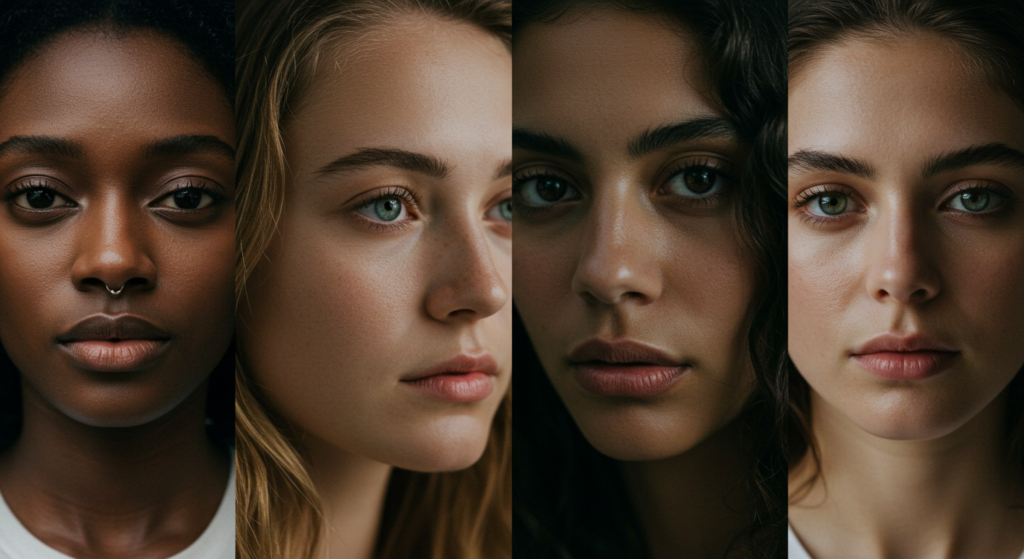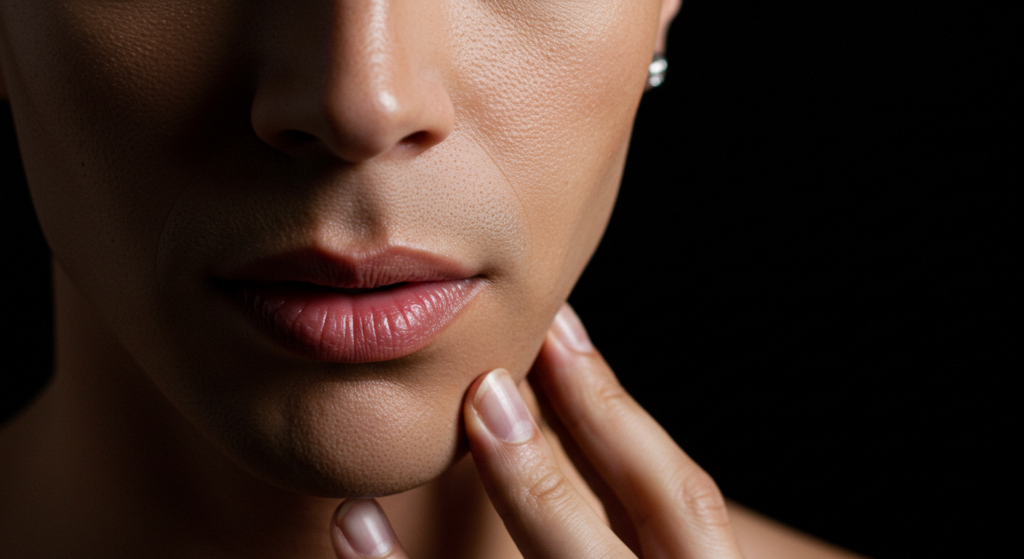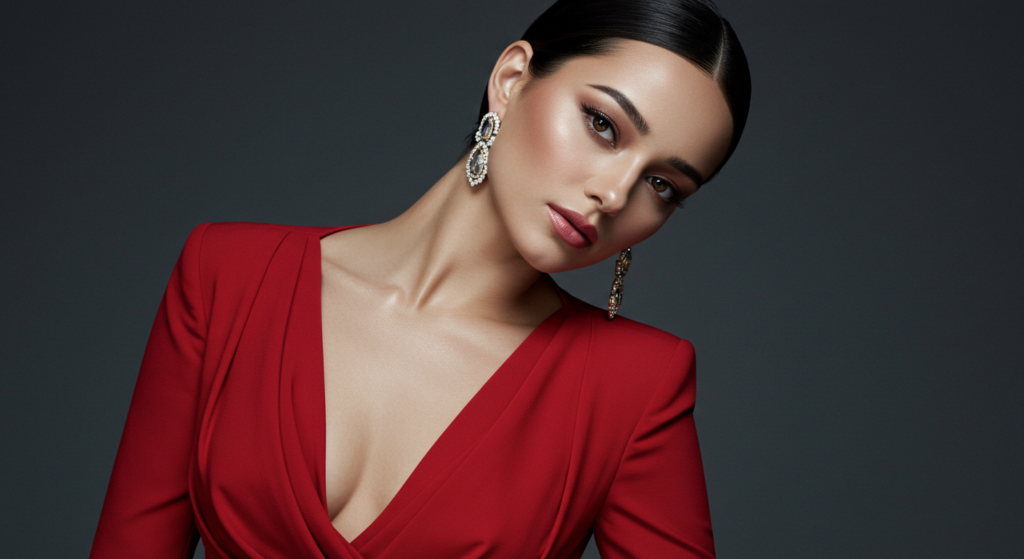For transgender individuals with round face shapes, Facial Feminization Surgery (FFS) can be a powerful tool for achieving a more feminine and harmonious appearance. Round faces, characterized by wider cheekbones and a softer, less defined jawline, require a nuanced approach to create the desired feminine contours. This blog post will delve into the specific considerations and procedures involved in FFS for round face shapes, providing you with a comprehensive understanding of what to expect.

Table of Contents
Defining the Round Face Shape in the Context of FFS
Before discussing surgical interventions, it’s essential to understand the characteristics of a round face shape in the context of FFS. Key features include:
- Wide Cheekbones: The widest point of the face is often at the cheekbones, creating a full and rounded appearance.
- Soft Jawline: The jawline lacks sharp angles and definition, contributing to the overall roundness.
- Rounded Chin: The chin is often less prominent and rounded, further softening the facial contours.
- Full Cheeks: The cheeks tend to be full and rounded, adding to the overall fullness of the face.
- Less Defined Facial Angles: The face lacks the sharp angles and defined bone structure typically associated with masculine features.
The goal of FFS for round faces is to create a more tapered and defined appearance, enhancing feminine features while maintaining natural-looking results.
Key FFS Procedures for Round Face Shapes
Several FFS procedures can be tailored to address the unique characteristics of round faces:
1. Jawline Reduction and Contouring
- This is often a central procedure for round faces. The goal is to narrow the jawline and create a more V-shaped or oval contour.
- The surgeon will carefully reshape the jawbone, removing excess bone and creating a more defined angle.
- The amount of bone reduction is carefully planned to avoid creating an overly sharp or unnatural appearance.
2. Chin Contouring and Reduction
- A rounded or wide chin can contribute to the overall roundness of the face. Chin contouring aims to create a more tapered and refined chin shape.
- Depending on the individual’s anatomy, the surgeon may reduce the width or projection of the chin.
- Creating a more pointed or oval chin shape helps to create a more feminine profile.
3. Cheek Augmentation (with Strategic Placement)
- While round faces already have prominent cheekbones, strategic cheek augmentation can create a more lifted and defined appearance.
- The placement of cheek implants or fat grafting is crucial. Instead of adding volume to the widest point of the cheek, the focus is on creating projection in the upper cheek area.
- This helps to create more of a heart shaped face, by adding definition to the cheekbone area, and pulling the visual focus upwards.
- Care must be taken to avoid adding too much volume, which could exacerbate the roundness of the face.
4. Temporal Reduction
- The temporal region, located on the sides of the forehead, can contribute to the overall roundness of the face.
- Temporal reduction involves contouring the temporal bones to create a smoother and more tapered transition from the forehead to the temples.
- This procedure can help to create a more refined and feminine forehead shape.
5. Brow Bone Contouring
- Reducing brow bone prominence is a common FFS procedure, regardless of face shape.
- For round faces, brow bone contouring helps to create a more balanced and feminine upper face.
- The surgeon will carefully reshape the brow bone to create a smoother and more feminine contour.
6. Lip Lift and Augmentation
- Lip shape and volume are important feminizing factors.
- A lip lift can shorten the distance between the nose and upper lip, creating a more youthful and feminine appearance.
- Lip augmentation with fillers or fat grafting can add volume and create a more defined Cupid’s bow.
- The proportions of the lips relative to the other facial features must be carefully considered.
7. Rhinoplasty
- Rhinoplasty can refine the shape and size of the nose, creating a more feminine profile that complements the overall facial proportions.
- Careful consideration of the nose width, and projection is important.

Considerations Specific to Round Face Shapes
When planning FFS for round faces, several specific considerations are crucial:
- Balancing Roundness and Definition: The goal is to create a more defined appearance without eliminating all the natural roundness of the face.
- Avoiding Overcorrection: Overcorrecting the jawline or chin can create an unnatural or masculine appearance.
- Maintaining Facial Harmony: The proportions of the various facial features must be carefully considered to ensure a balanced and harmonious outcome.
- Soft Tissue Considerations: Soft tissue management, including skin and fat distribution, is crucial for achieving natural-looking results.
- Individualized Approach: Each individual’s face shape is unique, and the surgical plan must be tailored to their specific anatomy and goals.
What to Expect During the Consultation
The initial consultation is a critical step in the FFS process. During this appointment, the surgeon will:
- Conduct a thorough facial analysis, including photographic documentation and, in some cases, 3D imaging.
- Discuss your goals and expectations for FFS.
- Explain the various surgical options and their potential outcomes.
- Address any questions or concerns you may have.
- Show potential outcomes with the help of simulation software.
- Explain the risks and benefits of the surgery.
Recovery and Aftercare
The recovery process after FFS varies depending on the specific procedures performed. Generally, you can expect:
- Swelling and bruising for the first few weeks.
- Discomfort that can be managed with pain medication.
- Limited physical activity for several weeks.
- Regular follow-up appointments to monitor your progress.
Choosing a Qualified Surgeon
Selecting a qualified and experienced surgeon is crucial for a successful FFS outcome. Look for a surgeon who:
- Is board-certified in facial plastic surgery or a related specialty.
- Has extensive experience in FFS for transgender individuals.
- Has a proven track record of achieving natural-looking results.
- Understands the nuances of round face shapes and their unique requirements.
- Has good before and after photos of round faced FFS patients.
The Psychological Benefits
FFS can have a profound psychological impact, particularly for transgender individuals with round face shapes. By creating a more feminine appearance, FFS can:
- Reduce gender dysphoria.
- Increase self-confidence.
- Improve social integration.
- Increase overall wellbeing.

Conclusion
FFS for round face shapes requires a nuanced and individualized approach. By working with a skilled and experienced surgeon, you can achieve natural-looking and harmonious results that enhance your feminine identity and boost your confidence. Remember that this is a journey of self-affirmation, and you deserve to feel comfortable and confident in your own skin.
Visit Dr.MFO Instagram profile to see real patient transformations! Get a glimpse of the incredible results achieved through facial feminization surgery and other procedures. The profile showcases before-and-after photos that highlight Dr. MFO’s expertise and artistic vision in creating natural-looking, beautiful outcomes.
Ready to take the next step in your journey? Schedule a free consultation with Dr. MFO ( Best Facial Feminization Surgeon for You) today. During the consultation, you can discuss your goals, ask any questions you may have, and learn more about how Dr. MFO can help you achieve your desired look. Don’t hesitate to take advantage of this free opportunity to explore your options and see if Dr. MFO is the right fit for you.
FFS Surgery for Transgender Faces with Round Face Shapes: FAQ
This FAQ addresses common questions about Facial Feminization Surgery (FFS) for transgender individuals with round face shapes.
Q: What are the main characteristics of a round face shape in the context of FFS?
A: Round faces are characterized by wider cheekbones, a soft and undefined jawline, a rounded chin, full cheeks, and less defined facial angles.
Q: What are the primary goals of FFS for round face shapes?
A: The main goals are to create a more tapered and defined appearance, enhance feminine features, and achieve a harmonious balance while maintaining natural-looking results.
Q: Which FFS procedures are commonly recommended for round faces?
A: Common procedures include jawline reduction and contouring, chin contouring and reduction, strategic cheek augmentation, temporal reduction, brow bone contouring, lip lift and augmentation, and rhinoplasty.
Q: How does jawline reduction differ for round faces compared to other face shapes?
A: For round faces, the focus is on narrowing the jawline to create a more V-shaped or oval contour. The surgeon carefully reshapes the jawbone, removing excess bone to create a more defined angle, while avoiding an overly sharp or unnatural look.
Q: What is the purpose of chin contouring in FFS for round faces?
A: Chin contouring aims to create a more tapered and refined chin shape, reducing its roundness or width to achieve a more feminine profile.
Q: How is cheek augmentation handled for round faces?
A: Cheek augmentation is done strategically, focusing on creating projection in the upper cheek area to lift and define, rather than adding volume to the widest point.
Q: What is temporal reduction, and why is it important for round faces?
A: Temporal reduction involves contouring the temporal bones to create a smoother and more tapered transition from the forehead to the temples, reducing the overall roundness of the face.
Q: What should I expect during the initial consultation?
A: During the consultation, the surgeon will conduct a thorough facial analysis, discuss your goals, explain surgical options, address your concerns, and potentially show potential outcomes using simulation software.
Q: What is the typical recovery process after FFS for a round face?
A: Recovery involves swelling and bruising for a few weeks, discomfort managed with medication, limited physical activity, and regular follow-up appointments.
Q: How do I choose a qualified surgeon for FFS with a round face shape?
A: Look for a board-certified surgeon with extensive experience in FFS for transgender individuals, a proven track record of natural-looking results, and a deep understanding of round face shapes. Check their before and after photos.
Q: What are the psychological benefits of FFS for transgender individuals with round faces?
A: FFS can reduce gender dysphoria, increase self-confidence, improve social integration, and enhance overall well-being.
Q: Is FFS for round faces a one-size-fits-all procedure?
A: No, FFS is highly individualized. The surgical plan is tailored to each person’s unique anatomy and goals.
Q: How does the surgeon ensure natural-looking results for round faces?
A: The surgeon carefully balances roundness and definition, avoids overcorrection, maintains facial harmony, considers soft tissue, and uses an individualized approach.
Q: What are the risks associated with FFS for round faces?
A: As with any surgery, there are risks such as infection, bleeding, scarring, and complications related to anesthesia. A thorough discussion of risks will occur during consultation.
Q: How long does the FFS procedure for round faces typically take?
A: The duration of the procedure varies depending on the specific procedures performed, but it can range from several hours to a full day.
Q: When will I see the final results of my FFS?
A: While initial changes are visible soon after surgery, final results may take several months to a year as swelling subsides and tissues heal completely.
Q: Can I combine FFS with other cosmetic procedures?
A: Yes, FFS can be combined with other procedures, but this should be discussed with your surgeon during the consultation.
Q: How much does FFS for round faces typically cost?
A: The cost varies depending on the procedures performed, the surgeon’s fees, and location. A detailed cost estimate will be provided during the consultation.









